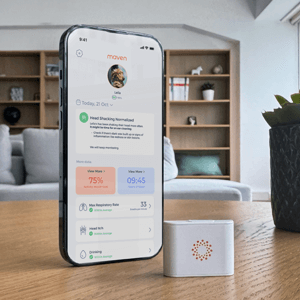Have you ever seen a cat alone on a busy street and wondered if they were a pet cat, a stray or feral cat? Ever thought how you should approach them? Knowing the difference between all three types of domestic cats will help you handle them right if needed. Here’s what you need to know if you found a lost cat!
Pet cat VS Stray cat VS Feral cat

The main difference lies in how socialized the cat is with human beings:
- Pet cats are fully socialized and live with their owners. When on the street by themselves, they might be just on their daily walk, or they might have gotten lost.
- A stray cat has been socialized and lived with people at some point in their life. However, they either left home, became lost, or were abandoned, and no longer have regular contact with people.
- A feral cat is an outdoor cat who has never been socialized with humans, or has had brief human contact but it has diminished over time until the cat is no longer used to it.
How to tell if a cat is stray or feral

When faced with a cat roaming on the streets, it can be hard to tell if we are dealing with a feral or a stray cat. After all, even a friendly kitten may be unpleasant on the first approach… Until they realize no harm will come to them. Pet cats will be easier to approach and will trust people more quickly, even if they are scared to death.
With time, a friendly cat will eventually start to gain confidence and get closer if the human represents a positive interaction. Food, water and a lot of patience are the keys here.

Is Maven right for your pet?
Take the quiz and see how Maven can support your pet’s wellness journey.
Bear in mind that female cats that have just given birth and have a litter to protect, may be harder to convince. They will attempt almost everything to keep their offspring safe. Much more effort has to come from the human side in order to gain this cat’s trust.
If the context allows, monitor the cat for a few days and pay attention to their body language, habits, and behavior with you and other cats. This will be helpful to assess how open the cat is to human contact, and if they are more likely to be feral or stray.
Feral cats are likely to be a part of a colony of cats, while stray cats are expected to live alone. In terms of body language, it is also quite different. Stray cats usually walk and move like a house cat, with their tails up and make eye contact with humans. On the contrary, feral cats may crawl, crouch and stay low to the ground, and eye contact is very rare.
Is the cat lost, or just the neighbor’s outdoor cat?

When you think you may have found a lost cat, it’s wise to check first if the feline wandering around has an owner or not. Plenty of outdoor cats do not have an ID tag or a collar, which can make it more difficult to distinguish them from a stray feline.
Reaching out to your neighbors to know if they recognize the cat should be your first move. Posting on social media or printing some flyers are also fairly good options. Don’t forget to check pet rescue groups online, message boards and the nearest veterinary clinics and animal shelters.
What to do when you find a stray or a lost pet cat?

Cats own a seemingly miraculous homing instinct… But that doesn’t mean that all lost cats will find their way home. Here is how you can help if you found a lost cat:
1 – Provide food and water
Providing food and clean water is a good way to win the cat’s trust. Both dry and wet food will ensure that the cat has access to a balanced diet. In case these are not viable options, offering cooked meat is also an alternative.
For kittens and moms, it’s important to choose a commercial food suited for kittens. Cow milk should be avoided, because the cat’s gastrointestinal tract has a hard time digesting it… And it will likely lead to diarrhea.
2 – Capture and contain with care
Being gentle, patient and careful are mandatory cues if you want to successfully lure a cat into a carrier. Of course, you will also need an extremely tasty treat… And wet food is usually a great choice! Online videos on how to properly capture and contain a cat are also useful resources.
Once safely inside the carrier, you should take the cat to the nearest veterinary clinic or animal shelter and have their microchip read. Alternatively, you can also take the cat home. Avoid at all costs mixing them with your own pets! This is highly stressful for all parties involved, and may lead to unexpected reactions. We suggest you let the cat out in a small contained room. Also, it’s better if you just leave the carrier open, so that they can leave it on their own terms.
3 – Check for ID tag or microchip
A lost cat may not have an ID tag or even a collar. If you are able to capture them, the next step should be checking if they have a microchip. For that, you will have to take the rescued kitten to a veterinary clinic or animal shelter.
Unfortunately, there are still plenty of cats that are not microchipped, which makes it impossible to link them to their owner. Nonetheless, there are still other options – you can either adopt the kitten, find a new home for them, or leave them in an animal shelter.

4 – Consider if an animal shelter is a viable solution
It is totally understandable and expected if adopting the rescued cat is not a possibility. In that case, contact local shelters and check if they have room to take stray cats in. Explain what steps you have already taken to determine if the cat is a stray, and be clear regarding why you think the cat needs help.
If for any reason that shelter is not able to help you, do not lose hope. Other rescue centers may have the space and the means to do so!
Be aware that, if the cat is gentle and easily allows you to capture them, leaving them unprotected on the street can be tragic. They might get hit by a car, get into fights with other animals, starve or injure themselves.

Maven Pet
Health Monitor
#1 Vet-recommended pet monitor! Tracks activity, rest, respiratory rate, water intake, scratching and other health indicators 24/7
5 – Find them a safe home
If you found a lost cat and don’t want to leave them to their fate in a shelter, take the lead and be proactive in finding them a forever-home! This will likely require some time and commitment, but in the end it will pay off.
There are lots of ways to win a potential owner’s heart! For example, spreading the word among family and friends, placing notices on social networks or posting signs in vet offices and on community bulletin boards.
The only thing we strongly recommend is that you make sure the cat is going to a safe, loving and life-long home!
Maven is all about proactive pet care. Be your best friend’s best friend by giving them 24/7, high-quality, industry-leading vet care to improve their mental health, physical health and more. No more frantic googling or unneeded stressful visits to the vet – Maven helps you save hundreds while also ensuring your pet lives the best life possible. Get your kit now!



